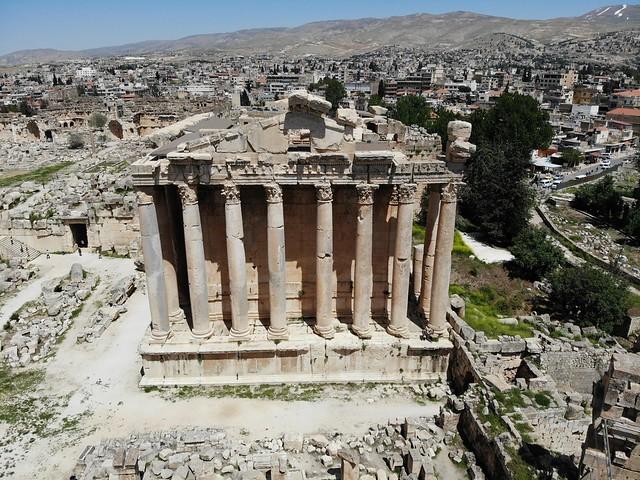Aanjar
Overview
Aanjar: A Glimpse into Ancient Heritage
Nestled in the picturesque Beqaa Valley of Lebanon, Aanjar is a city that beautifully marries the echoes of history with the vibrancy of contemporary life. Famous for its archaeological sites, Aanjar was a vital center during the Umayyad dynasty in the 8th century. As you stroll through the ruins, you will encounter the remnants of magnificent structures, including the impressive palace complex and the grand mosque, showcasing the architectural ingenuity of that era. The intricate stone carvings and the layout of the ancient city transport you back in time, allowing you to appreciate the sophistication of early Islamic architecture.
Cultural Tapestry
The culture of Aanjar is a rich tapestry woven from its diverse historical influences, including Roman, Byzantine, and Islamic traditions. This blend is evident in the local customs, cuisine, and festivals that celebrate both ancient and modern Lebanese culture. The city is predominantly inhabited by the Armenian community, which has added a unique flavor to its cultural landscape. Visitors can indulge in traditional Armenian dishes like kebabs and pilaf, often accompanied by fresh herbs and spices that reflect the region's agricultural bounty. The warm hospitality of the locals further enhances the experience, as they are eager to share stories of their heritage and the significance of their city.
Atmosphere and Local Characteristics
Walking through Aanjar, you will be captivated by its laid-back atmosphere, where the pace of life feels more relaxed compared to the bustling urban centers of Lebanon. The charming streets are lined with shops selling artisanal crafts, textiles, and local produce, inviting travelers to immerse themselves in the everyday life of the city. The vibrant local markets are a sensory delight, filled with the aromas of spices, fresh fruits, and baked goods. Don't miss the chance to engage with the friendly vendors, who often share their knowledge about the products and the region’s agricultural practices.
Nature and Surroundings
The natural beauty surrounding Aanjar is another highlight that appeals to travelers. The Beqaa Valley is renowned for its fertile lands and stunning mountain vistas, providing ample opportunities for outdoor activities like hiking and exploring nearby vineyards. The region’s climate is favorable for agriculture, and you'll find lush fields dotted with vineyards and olive groves. A short drive from the city will take you to the majestic Mount Lebanon, where breathtaking views and fresh mountain air await.
Historical Significance
Aanjar's historical significance extends beyond its ruins. The city is a UNESCO World Heritage Site, recognized for its archaeological value. The site offers a glimpse into the urban planning and lifestyle of the Umayyad period, making it an essential stop for history enthusiasts. The preservation of these ruins, alongside the city's ongoing efforts to celebrate its heritage through museums and cultural events, underscores its importance in Lebanon's historical narrative.
Visiting Aanjar
For travelers looking to explore Aanjar, the best time to visit is during the spring or fall when the weather is mild and pleasant. The city is easily accessible by road from Beirut or other major cities in Lebanon. Guided tours are available, providing deeper insights into the archaeological sites and the local culture. Whether you're wandering through ancient ruins, savoring delicious local cuisine, or simply soaking in the serene atmosphere, Aanjar promises a memorable experience that captures the essence of Lebanon's rich history and vibrant culture.
Other towns or cities you may like in Lebanon
Explore other cities that share similar charm and attractions.



